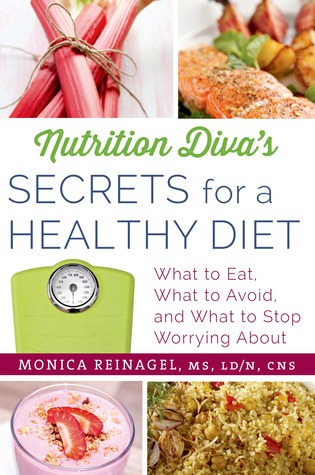Protein Density: How To Get More Protein for Fewer Calories
It can be challenging to increase your protein intake using plant-based sources without taking in more calories than you need. This is where the concept of protein density can help.
A few weeks ago, I talked about the concept of fiber density, which is a way of looking at how much fiber a food contains per calorie. As we discovered, some high fiber foods are also relatively high in calories. Choosing foods with a high fiber density (which have more fiber per calorie) can help you increase your fiber without blowing out your calorie budget.
Buy Now

Protein can present a similar dilemma, especially for vegetarians. In order to get the same amount of protein from black beans as I would from chicken breast, I’d have to eat three times as many calories. It can be challenging to increase your protein intake using plant-based sources without taking in more calories than you need. This is where the concept of protein density can help.
Just as we did for fiber density, we can calculate the protein density of a food by dividing the protein by the calories. Foods with a higher protein density provide more protein per calorie.
Which Foods Have the Most Protein Per Calorie?
Not surprisingly, animal proteins like meat, fish, eggs, and chicken have a much higher protein density than plant based proteins like beans, nuts, seeds, and grains. Among the animal proteins I compared, chicken breast, egg whites, and lowfat cottage cheese have the highest protein density. Whole eggs, cheese, and other full-fat dairy products were among the lowest in protein density.
That’s not to say that full-fat dairy products aren’t good for you or that egg whites are better than whole eggs. Protein isn’t the be-all and end-all of good nutrition. But if you are looking for ways to get more protein with fewer calories, those are probably not the foods you want to turn to.
The protein density score is even more useful if you are limiting yourself to plant-based proteins.
Protein Density of Plant Foods
Certain vegetables (especially mushrooms, leafy greens, and cabbage) have a surprisingly high protein density. Bok choi, for example, has a protein density score of 12, about the same as lean ground beef. That means that if you eat 100 calories worth of bok choi or lean beef, you’ll get about 12 grams of protein. Not too shabby! But here’s the rub: You’d have to eat about 8 cups of bok choi to get as much protein (and calories) as you’d get from a three ounce hamburger. That’s an awful lot of bok choi.
Peanuts and pumpkin seeds are your best bets in the nut and seed category, with protein density of 4 and 5, respectively. Just remember ‘P’ for protein!
Even though they have a high protein density, these vegetables may not be a practical way to get a whole lot of protein at one time. Tofu, on the other hand, not only has the same amount of protein per calorie as lean ground beef, but also about the same amount of protein per serving.
Some of the things that vegetarians consider to be go-to protein sources have surprisingly low protein density. Almonds, for example, have a protein density of just 3.5. Sunflower seeds are even lower, just 2.8. That means you’ll have to take in a lot of calories to get a little protein. In terms of protein, peanuts and pumpkin seeds are your best bets in the nut and seed category, with protein density of 4 and 5, respectively. Just remember “P” for protein!
Which Has More Protein per Calorie?
Here’s one that may surprise you: Although we tend to think of wheat as a carbohydrate, it actually has a decent amount of protein as well. Whole wheat bread, for example, has a protein density of 5, about the same as whole milk and significantly higher than quinoa, which is often heralded for its protein content.
As you can see, the protein density score gives you an easy way to compare similar foods. Black beans have a protein density score of 6, meaning that 100 calories worth of black beans only delivers 6 grams of protein. Edamame, on the other hand, has a protein density of around 10. You get ~50% more protein from the same number of calories.
Earlier this year, I reviewed two vegan hamburger products, the Impossible Burger and the Beyond Burger. The Beyond Burger is made of pea protein and has a protein density of 7. The Impossible Burger, which is made from soy and wheat protein, has a protein density of 9. (By way of comparison, a regular hamburger has a protein density of 10.)
Here are a few more unexpected findings: Cheddar cheese has a protein density of 5 while mozzarella is around 8. A regular baked potato has a protein density of 3 (about the same as almonds), compared with a baked sweet potato, which is only 2. And while similar in calories, it turns out that whole wheat pasta beats out egg noodles in terms of protein density, 4 to 3.
I should point out that protein density does not take into account protein quality.
Just for fun, I’ve posted a table of some healthy foods and their protein density but you can quickly calculate and compare protein density by dividing the protein by the calories and then multiplying by 100.
I should point out that protein density does not take into account protein quality. Because they contain a more optimal distribution of essential amino acids, animal proteins have a higher biological value than plant-based proteins. Nonetheless, protein density can still be useful—and it’s a whole lot easier to calculate.
Let me know whether you find protein density to be a useful tool. Post your comments below or on the Nutrition Diva Facebook page.
Resources:
Protein Density of Foods
Image of protein-rich foods © Shutterstock






